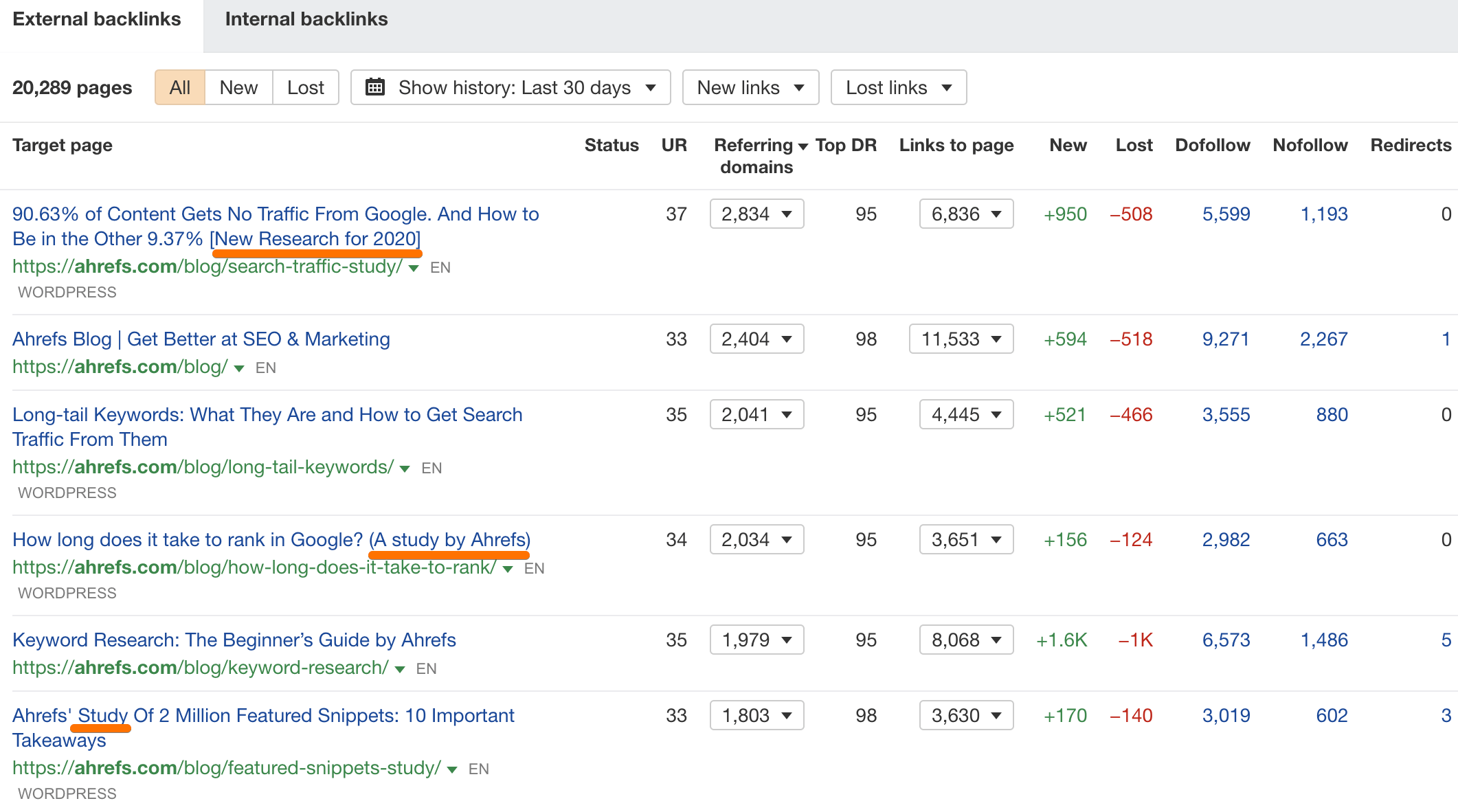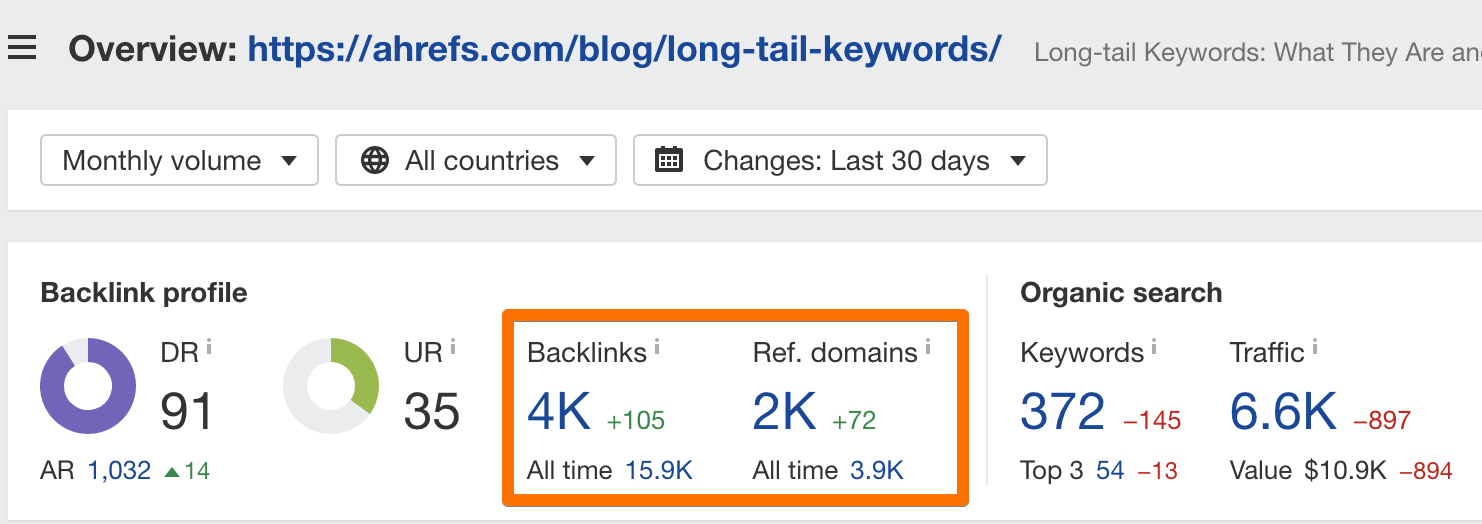Editorial Link
What is an Editorial Link?
An editorial link is an organic inbound link that’s not traded for, asked for, or paid for. These types of links are also known as earned links. They are usually the most valuable and desired backlinks any website can get, but only specific types of content can attract these links.
For example, eCommerce product pages are not likely to earn editorial links. However, a helpful guide or free online calculator can earn hundreds or thousands of editorial links because websites want to recommend them to their readers.
Why are editorial links important?
Editorial links are important because they don’t violate Google’s Spam Policies. Instead, they actually fall within Google’s three major ranking factors. They view links as ‘votes,’ and these votes help them identify which pages should rank near the top of the search results.
Therefore, a general rule of thumb is that a page with more backlinks can rank higher in search results. Then, via internal links, you can spread the benefits of editorial links to other pages on your website that could be more successful in earning links.
What content tends to earn links?
To earn links, you need to create link-worthy content, also known as linkable assets. However, not all “types” of content are link-worthy, and not all ‘linkable assets’ are created to attract links solely.
There are also many other benefits when creating content that prioritizes generating organic links instead of search traffic. Here are a few examples of types of content that work well as “linkable assets” and how you can create this content yourself.
1. Infographics (static or animated)
Infographics are still one of the most popular content formats when it comes to creating “linkable assets.” However, you should only use infographics when the content benefits from being presented in a visual format.
2. Online tools, calculators
Online tools and calculators have the potential to attract lots of editorial links. For example, here’s the backlink profile for the title capitalization tool:

Although this type of asset can generate a decent amount of earned links, it does require additional time and budget to design. However, for some, it might be the best route to getting more links.
3. Studies and research
Studies and research are great at attracting links. But it does depend on the industry. For example, four of the five most linked-to pages on our blog are studies on SEO and marketing. However, a clothing brand might not benefit from linking a study.

Studies like these may have attracted this many links because people trust Ahrefs, but you don’t have to base studies and research on crazy amounts of data. Personal case studies can also generate lots of links.
4. Definitive guides and tutorials
With so much information readily available online, it’s hard to find the exact answer you need. That’s why definitive guides and tutorials tend to earn many backlinks. Most websites prefer to link to one definitive guide rather than a bunch of different resources.
Here’s the link profile of our Guide to Long-Tail Keywords:

But you should note that Ahrefs is a trusted brand in our industry with a lot of unique data and insights to share. That’s why people link to us so eagerly.
Promote your linkable assets
As we said, linkable assets aren’t always created to encourage search traffic. But even the most amazing visuals and revolutionary studies won’t get links unless the right people discover them. This means you’ll need to invest in a content promotion strategy.
Here are a few examples:
Pitch to sites in your niche
It can help to pitch to sites in your niche that actively link to assets like yours. For example, if you create an infographic, you want to find sites that actively publish infographics in your niche. You can do this using our Content Explorer.
Newsletters
Newsletters are a great way to promote assets such as guides, studies, and online tools. Whether it’s your audience or a sponsored post on another email list, it doesn’t require SEO or organic search traffic to build links.
Paid promotion
Types of linkable assets, such as online calculators, can build links naturally. But if nobody knows your tool exists, you won’t earn any new links. That’s why paid promotion using PPC ads can generate tons of links.
Find resources that are out of date
Finally, look for resources that need to be updated. Often, studies will get tons of links when they’re first published. But then they won’t have any plans to update the study. You can easily find outdated resources using the Content Explorer and entering a search term like this:
- [INDUSTRY KEYWORD] + “study”
- [INDUSTRY KEYWORD] + “survey”
- [INDUSTRY KEYWORD] + “research”
- [INDUSTRY KEYWORD] + “data”
Then sort the results by the number of referring domains. You want to look for a study that’s out of date but has lots of referring domains. From there, you would reach out to everyone linking to the original with your new version.
FAQs
Are backlinks the same as editorial links?
Not exactly. Backlinks are any links to your site while editorial links are only links that you earned organically.
How are editorial links used?
Editorial links are typically used within in content and in context to the external source. For example, a blogger or journalist might link to your research or study using a statistic as the anchor text.